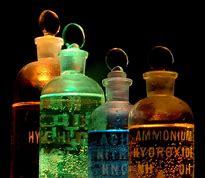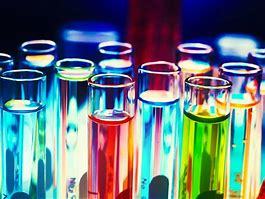
Tri Ethylene Glycol (TEG)
Product Details:
- Density 1.1 Gram per cubic meter (g/m3)
- Form Liquid
- Product Type Triethylene Glycol
- Grade Standard Technical Grade
- Usage Laboratory
- Click to view more
X
Tri Ethylene Glycol (TEG) Price And Quantity
- INR
- 200 Liter
Tri Ethylene Glycol (TEG) Product Specifications
- Laboratory
- 1.1 Gram per cubic meter (g/m3)
- Liquid
- Triethylene Glycol
- Technical Grade
Tri Ethylene Glycol (TEG) Trade Information
- Paypal Telegraphic Transfer (T/T) Cash in Advance (CID) Cash Advance (CA)
- 200 Liter Per Day
- 2-5 Days
- North America Australia Eastern Europe Central America Middle East South America Western Europe Asia Africa
- All India
Product Description
Triethylene glycol, often abbreviated as TEG, is a colorless, odorless, and hygroscopic liquid compound with the chemical formula C6H14O4. It is part of a family of compounds known as glycols, which are characterized by having multiple hydroxyl (OH) groups. Triethylene glycol contains three hydroxyl groups and is derived from ethylene glycol through a series of chemical reactions.
TEG is primarily used as a hygroscopic agent, which means it has a strong affinity for water and is used to absorb and remove moisture from various processes and systems.
# Some of its common applications include:
1. Natural Gas Dehydration: Triethylene glycol is commonly used in the natural gas industry to remove water vapor from natural gas streams. It is part of the glycol dehydration process, which involves passing the natural gas through a TEG solution to absorb the water vapor, thereby making the natural gas more suitable for transportation and use.
2. Air Conditioning and Refrigeration: TEG is used in the cooling systems of air conditioners and refrigeration units to prevent the formation of ice. It does this by absorbing moisture from the air, which helps to maintain the efficiency and performance of these systems.
3. Hydraulic Fluids: TEG can be found in some hydraulic fluids and brake fluids. Its hygroscopic properties help maintain the fluid's stability and prevent water contamination.
4. Chemical Manufacturing: Triethylene glycol is used as a chemical intermediate in various manufacturing processes, including the production of plastics, resins, and other chemical compounds.
5. Deicing and Antifreeze: TEG can be used as an ingredient in deicing fluids and antifreeze formulations. Its ability to lower the freezing point of water makes it useful in cold weather applications.
# FAQ:
1. What is Triethylene Glycol (TEG)?
Ans: TEG is a chemical compound with the formula C6H14O4. It is a colorless, odorless, and hygroscopic liquid with three hydroxyl (OH) groups. TEG is a member of the glycol family of compounds.
2. What are the primary uses of TEG?
Ans: TEG is commonly used for natural gas dehydration, as a coolant in air conditioning and refrigeration systems, as a hydraulic fluid, in chemical manufacturing, and as an ingredient in deicing and antifreeze formulations.
3. How does TEG work for natural gas dehydration?
Ans: In the natural gas industry, TEG is used to remove water vapor from natural gas streams. The glycol dehydration process involves passing the natural gas through a TEG solution, which absorbs the water vapor, making the natural gas suitable for transportation and use.
4. What is TEG's role in air conditioning and refrigeration?
Ans: TEG is used in these systems to prevent the formation of ice. It absorbs moisture from the air, ensuring that the cooling systems operate efficiently and do not freeze up.
5. Is TEG safe to use?
Ans: TEG is generally safe for its intended industrial and commercial uses. However, it should be handled with care. It can be harmful if ingested or if it comes into contact with the skin or eyes. Follow proper safety procedures when working with TEG.
6. Can TEG be used as an antifreeze?
Ans: Yes, TEG can be used as an ingredient in antifreeze formulations. It helps lower the freezing point of water, preventing the formation of ice and ensuring that liquids do not freeze in cold weather.
7. What are some other industrial applications of TEG?
Ans: TEG is used as a chemical intermediate in various manufacturing processes, such as the production of plastics, resins, and other chemical compounds.
8. How should TEG be stored and handled?
Ans: TEG should be stored in a cool, dry place away from heat sources and open flames. It should be handled with proper safety equipment, including gloves and eye protection, as it can be harmful if it comes into contact with the skin or eyes.
9. Is TEG environmentally friendly?
Ans: TEG itself is not considered environmentally friendly due to its hygroscopic nature, but its use in preventing ice formation and ensuring the efficiency of various industrial processes can have positive environmental impacts by reducing energy consumption and preventing equipment damage.
10. What are some alternative chemicals to TEG for similar applications?
Ans: Ethylene glycol, propylene glycol, and methanol are some of the chemicals used in similar applications, such as antifreeze and deicing.
Tell us about your requirement

Price:
Quantity
Select Unit
- 50
- 100
- 200
- 250
- 500
- 1000+
Additional detail
Mobile number
Email
Other Products in 'Glycols' category
MEHTA PETRO-REFINERIES LIMITED
GST : 27AAACM5768N2ZT
GST : 27AAACM5768N2ZT
509, HIVE 67, ICON Tower, Borsapada Road, Next to Raghuleela Mall, Kandivali (West).Mumbai - 400067, Maharashtra, India
Phone :08045812121
 |
MEHTA PETRO REFINERIES LTD.
All Rights Reserved.(Terms of Use) Developed and Managed by Infocom Network Private Limited. |

 English
English Spanish
Spanish French
French German
German Italian
Italian Chinese (Simplified)
Chinese (Simplified) Japanese
Japanese Korean
Korean Arabic
Arabic Portuguese
Portuguese






